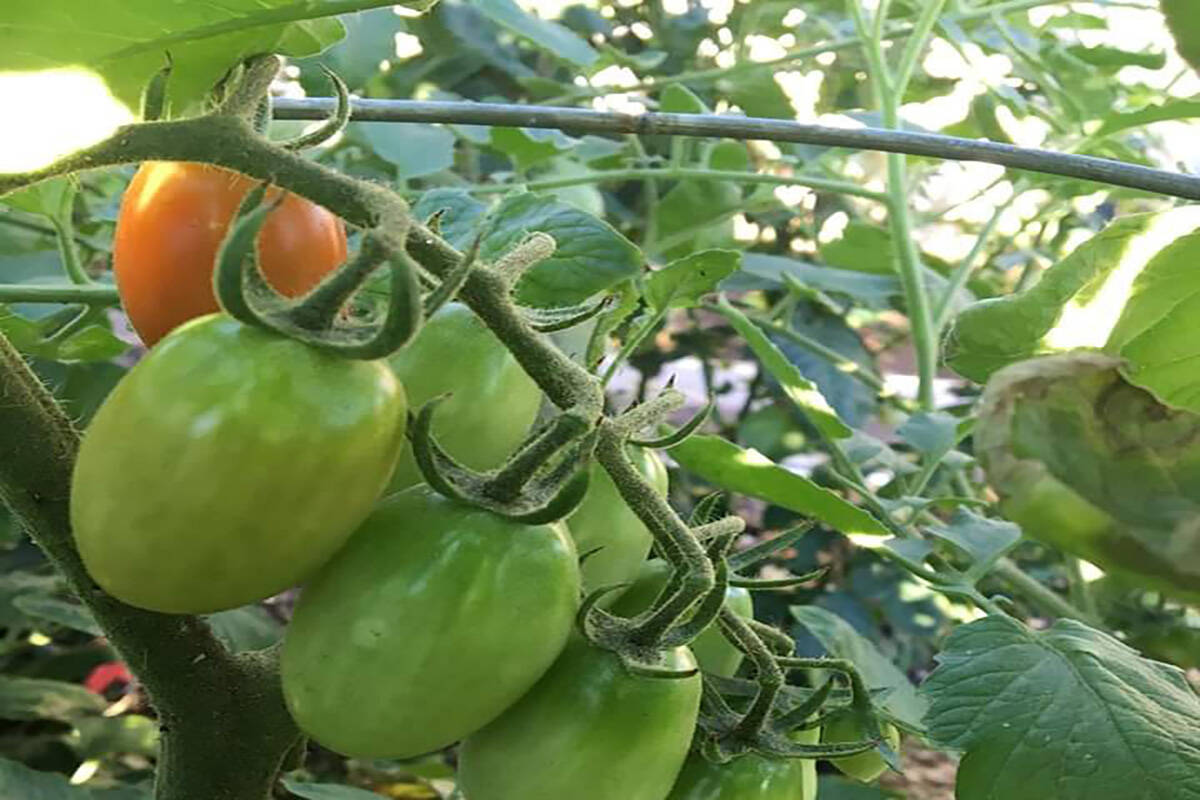Humidity from rain can cause lawn diseases
Q: I live in Henderson where we enjoy having a lawn as part of our yard. It was thick and beautiful when we moved in, but it soon withered after we made some changes to sprinkler layouts and had the water off for a while. I laid fresh sod and it too struggled. I tried a fungicide and that seemed to help, but it then died completely. Now the rest of the lawn is headed in the same direction. I’m at the point of desperation and could use some sound advice in the midst of some differing opinions.
A: Outside of watering, some lawns experienced disease problems earlier in the season that lingered after we had high humidity because of the rain. That change in our weather encouraged plant diseases to occur. In the desert, it’s usually the higher humidity that’s the problem.
The humidity is now below 15 percent (except directly above lawns), and lawns should not need a fungicide application to keep the disease from spreading if the lawn dries after we apply water and it is in good health. When there was higher humidity, some lawns may have needed a fungicide. A lot of it had to do with the lawn’s current health.
If you applied a lawn fungicide, it should have stopped needing the applications if the general humidity was above 25 percent. Plant disease susceptibility is sometimes compared to a three-legged stool. Plants are susceptible to fungal disease if the disease organism is present; general health and susceptibility of the plant are good; and the current weather.
The higher humidity is now over. The relative humidity is now in the desert range. I think you are seeing old lawn disease damage (unless the lawn grasses are in poor health).
Make sure you follow label directions when you apply any fungicide. Any traditional broad-spectrum fungicide should work, but generally, the higher-priced fungicides for lawns are usually a better choice.
This fall, we should be watering lawns about two to three times each week — no more than four times each week. Water early in the morning and wet the lawns from 8 to 10 inches deep in a single application. Sloped areas, or hard soils, may need multiple starts, about 30 minutes to one hour apart, to keep the water from puddling into low spots.
Your lawn may not need it, but try aerifying your lawn with a gasoline-driven core aerifier. Then “topdress” your lawn with a rich compost to fill the aerification holes. Irrigate your lawn immediately after this.
This process of filling the aerification holes, followed by topdressing and irrigation, improves the rooting depth of the grass. This will improve a lawn’s health.
Q: Is it time to plant tomatoes or is it still too warm? My garden is a raised bed on the south side of the house. We have a shade cover for the summer. Do I need it for the winter? Tomatoes seem to be the only vegetable I have luck with.
A: If you have an indeterminate variety (keeps getting longer and producing, such as the old-fashioned indeterminate type of Early Girl), you can cut it back now for fall production. In fact, it should have been cut back in September actually.
A lot depends on the weather after you cut it back. Sometimes you will luck out and it stays warm through most of the winter. The compact determinate types are pulled out after they produce fruit. Indeterminate types are cut back in the fall and then pray there is good weather.
Tomatoes are tricky in this climate. You will continue to harvest tomatoes that set earlier when temperatures were cooler, but tomatoes stop setting fruit when air temperatures are consistently above 95 degrees.
Tomatoes probably produced well this past year if you kept fungal diseases at bay. This past year, air temperatures dropped below 95 degrees erratically so tomato production may have been erratic as well in some parts of the valley.
Always grow a couple of tried-and-true varieties such as the compact Early Girl, Patio, Celebrity, Jet Star and others that you have had success with in the past. Always throw in a Roma type such as San Marzano and cherry or grape tomatoes such as Sweet 100.
If you are trying a couple of new varieties of tomatoes, do that carefully and remember what you planted. If you are serious about growing tomatoes, evaluate their production and care for them for three or four years in a row. You always want some older tried-and-true varieties as backups.
Planting in the spring between Feb.15 and March 15 is better in most years than cutting back indeterminate types in the fall. The weather can play havoc on gardens. You may luck out and have a nonfreezing winter or location. Look at your weather app and which varieties of tomatoes you planted to determine the precise timing.
When to plant, the varieties to plant and soil improvement are always important when growing tomatoes. Soils that have been “fluffed up” (rototilled or spaded) warm up faster than those that haven’t. If you’re using a soil thermometer, temperatures above 55 degrees are good for root growth on tomatoes.
Q: I cut out the leaves with the large black spots and lesions on my agave. There are a few leaves with fairly small black dots speckling all over the underside. Should I cut off the entire leaf? Additionally, the edge of one leaf is kind of perforated. Is this age or some kind of bug/mite/disease?
A: The leaves of agave won’t totally die back to the stem when part of their leaf is cut. It will just sit there, usually edged with brown where it has been cut. If it doesn’t look out of balance, I would suggest removing the leaves entirely.
Remember that fungicides prevent fungal diseases from getting worse. Right now, the humidity is above 15 percent, so I don’t expect diseases to get any worse unless the plant is in poor health. I would recommend treating the leaves with fungicide dust to prevent the spread of those black spots that you are talking about.
Most fungicides are liquid now and not a dust. If the fungicide exists as a spray, it is a different formulation from a dust. An alternative is to spray over the black spots as insurance to keep the disease from spreading if the weather or plant health changes. If it rains again, reapply the fungicide within 24 hours after it stops raining.
Bob Morris is a horticulture expert and professor emeritus of the University of Nevada, Las Vegas. Visit his blog at xtremehorticulture.blogspot.com. Send questions to Extremehort@aol.com.





























